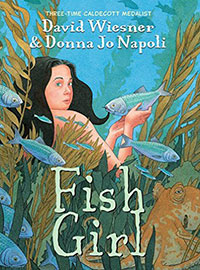 A good graphic novel should pose a mystery.
A good graphic novel should pose a mystery.
As it opens (last possible minute), the reader often has no clue what’s going on.
It’s often an unknown world, even if it looks like our world.
This isn’t that different than the opening of a conventional print book but, for some reason, people often react to graphic novels by telling me, “I can’t read them! I never know what’s going on.”
What is there about adding continual visuals that causes some otherwise avid readers to throw a graphic novel aside with such disfavor?
This question is an intriguing one for me. In our Chapter & Verse Book Club, we read at least one graphic novel each year, usually with an undercurrent of grumbling. I know which of our members won’t like the book, which of them won’t open the book, and which of them will do their best to like the book. Some will even love the book.
Why such a wide range of responses based on the visual aspect of the book? And the dialogue nature of the story?
I recently finished David Wiesner and Donna Jo Napoli’s Fish Girl. The opening is bewildering. What is going on? I find this satisfying.
When I finished, I turned immediately to re-read it, to figure out where I first figured it out. What were the clues? Were they visual or verbal or a combination of both? I’m not going to tell you, of course. That’s your reading journey. But I was particularly fond of the way in which Fish Girl (dare I say it?) unwinds.
As a long time fantasy reader, I’m familiar with stories in this segment of the genre. (I’m trying not to reveal too much so I’m purposefully not naming that segment.)
About the book, David Wiesner writes, “I tried several times to develop a picture book around these components (drawings of characters, scenes, and settings to go with an image of a house filled with water where fish are swimming) but the house full of fish turned out to be a complex image, suggesting stories too long and involved for the picture book format. The logical next step was to see it as a graphic novel.”
Many of the people who don’t care for graphic novels love picture books. Perhaps understanding graphic novels as a picture book for telling longer, more complex stories will help them appreciate this form more?
In Fish Girl, the watercolor-painted frames are clear and visually beautiful. The characters are well-delineated. The dialogue is involving. The mysteries lead the way. Why does this girl, who lives with fish and an octopus inside of a house filled with water, named Ocean Wonders, seem to be a prisoner? Why can’t she leave? Why does Neptune set so many rules? Are stories the true reason that Fish Girl stays in her prison?
Wiesner’s paintings provide focus in an involving way throughout the book. The ocean is brooding, beautiful, and beckoning. Fish Girl is lonely, a loneliness every reader will recognize. The expressions of loneliness, bewilderment, friendship, and longing are beguiling. When I consider how long it would take me to draw and paint just one of these frames and then look at how many frames are employed to tell this story, I could well imagine that David Wiesner has been working on this book for five years. I wonder what the truth of that is?
It’s a book that many readers, young and old, will enjoy. I believe it would be a good read-aloud if all listeners can see the book and help turn the pages. Fish Girl is highly recommended. And I will keep looking for graphic novels that will convert even their most reluctant readers!
Fish Girl
David Wiesner and Donna Jo Napoli
Clarion Books, March 7, 2017
(I read an Advanced Reader’s Copy.)
ISBN 978−0−544−81512−4 $25 hardcover
ISBN 978−0−547−48393−1 $18 paperback
